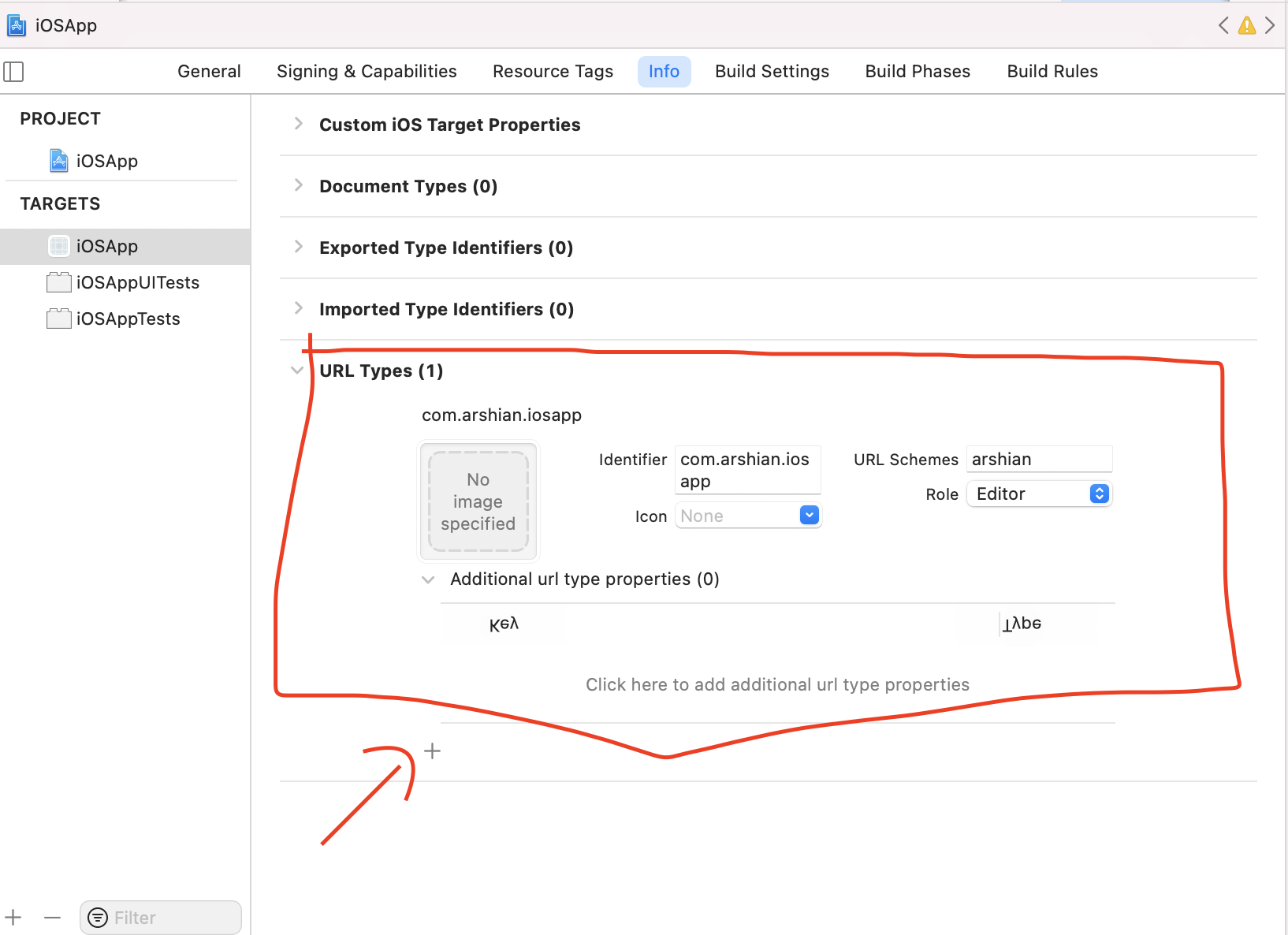To support a custom URL scheme:
- Define the format for your app's URLs.
- Register your scheme so that the system directs appropriate URLs to your app.
- Handle the URLs that your app receives.
URLs must start with your custom scheme name. Add parameters for any options your app supports. For example, a photo library app might define a URL format that includes the name or index of a photo album to display.
an example is :
myphotoapp:albumname?name="foods"
myphotoapp:albumname?index=1
Register Your URL Scheme
![enter image description here]()
- click on project target and goto info page
- in the info page expand URL Types section and hit the + button
- fill fields with appropriate values.
Handle Incoming URLs
The system delivers the URL to your app by calling your app delegate's application(_:open:options:)method. you can useNSURLComponents` APIs to extract the components. Obtain additional information about the URL, such as which app opened it, from the system-provided options dictionary.
func application(_ application: UIApplication,
open url: URL,
options: [UIApplicationOpenURLOptionsKey : Any] = [:] ) -> Bool {
// Determine who sent the URL.
let sendingAppID = options[.sourceApplication]
print("source application = \(sendingAppID ?? "Unknown")")
// Process the URL.
guard let components = NSURLComponents(url: url, resolvingAgainstBaseURL: true),
let albumPath = components.path,
let params = components.queryItems else {
print("Invalid URL or album path missing")
return false
}
if let photoIndex = params.first(where: { $0.name == "index" })?.value {
print("albumPath = \(albumPath)")
print("photoIndex = \(photoIndex)")
return true
} else {
print("Photo index missing")
return false
}
}
If your app has opted into Scenes, and your app is not running, the system delivers the URL to the scene(_:willConnectTo:options:) delegate method after launch, and to scene(_:openURLContexts:) when your app opens a URL while running or suspended in memory.
func scene(_ scene: UIScene,
willConnectTo session: UISceneSession,
options connectionOptions: UIScene.ConnectionOptions) {
// Determine who sent the URL.
if let urlContext = connectionOptions.urlContexts.first {
let sendingAppID = urlContext.options.sourceApplication
let url = urlContext.url
print("source application = \(sendingAppID ?? "Unknown")")
print("url = \(url)")
// Process the URL similarly to the UIApplicationDelegate example.
}
}

